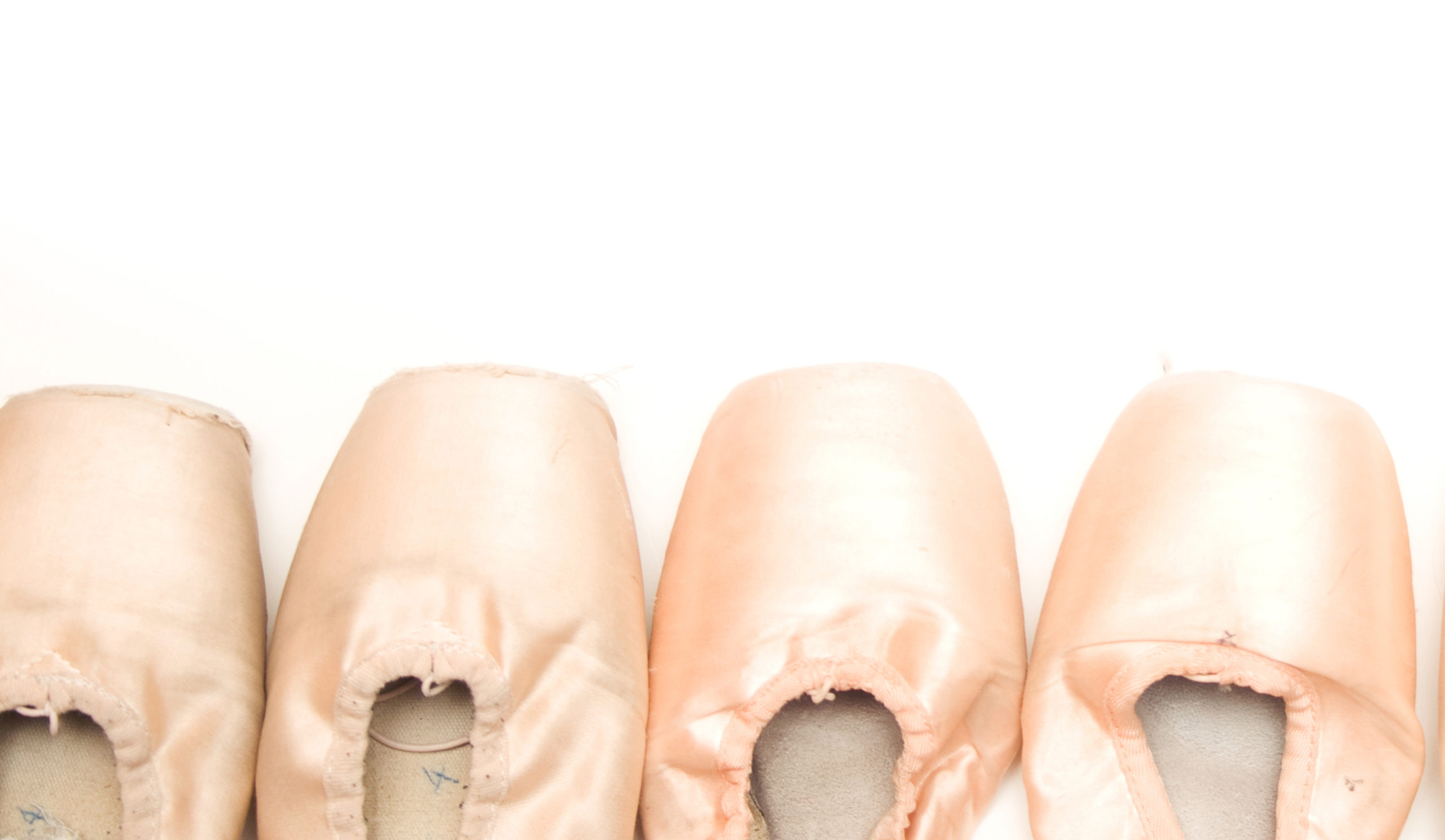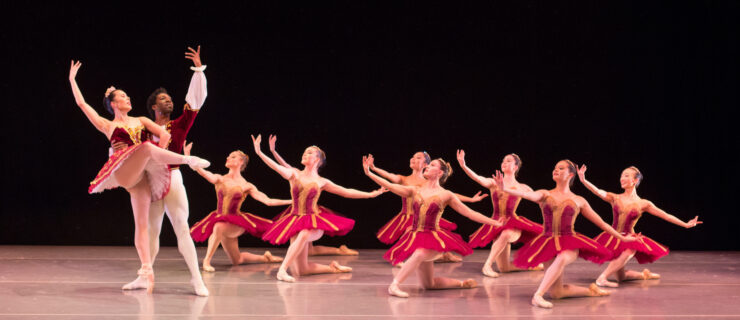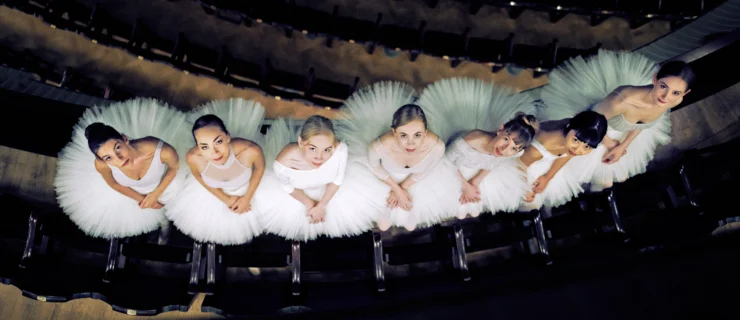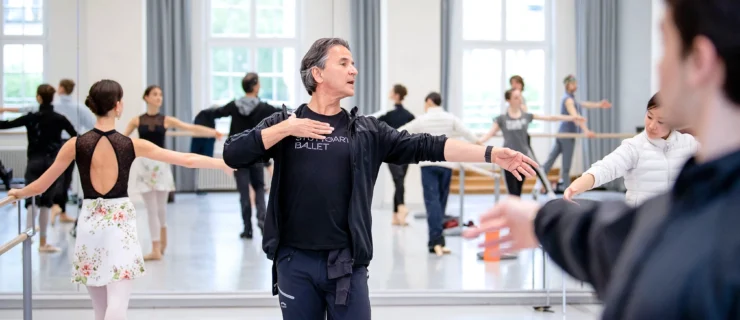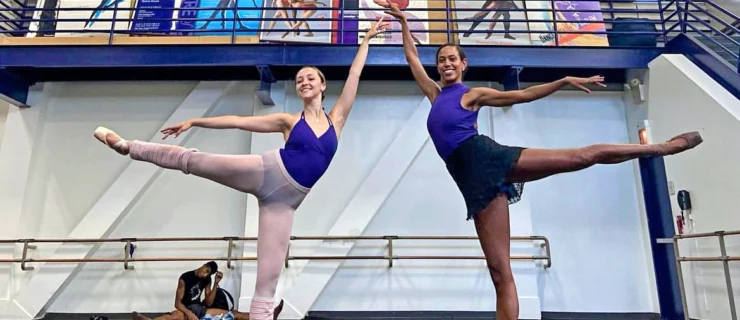Your Best Body: The Halo Effect
Dancers strive to be as healthy as possible. They’ll look into almost any piece of nutrition advice they think might help them perform better onstage. But, despite good intentions, sometimes the guidance we get is simply wrong, or we misunderstand information. Don’t let your efforts become counterproductive: Avoid these nutrition myths that get passed around backstage far too often.
Myth: Always Choose Whole Grains
While whole grains and complex carbohydrates are your best sources for prolonged energy, if you eat them at the wrong time, they might not help your dancing. Have to be onstage after the next scene? Simple, easily digestible carbohydrates, like white bread or pretzels, are actually the better choice. “The closer you are to performance, the more simple foods you should choose,” says Heidi Skolnik, a New York nutritionist who works with dancers at the School of American Ballet. Complex carbohydrates digest slowly, so it can take a long time before your muscles can use them for energy. “There is a difference between eating meals for nutrients—like having a high-fiber lunch—and eating for immediate fuel, like right before class,” explains Skolnik. “White carbs won’t give you whole-grain nutrients, but they do carry easily accessible energy and calories.” She says even a handful of jelly beans will give you a boost.
Remember, if the body doesn’t have enough carbohydrates to draw from onstage, you could end up feeling lethargic and having trouble concentrating. Plus, if you’re bloated from eating only whole grains too close to performance, those fouettés will be harder to nail.
Myth: Fresh Produce Is Always Best
Don’t look down on frozen, canned and dried fruits. “Frozen produce actually retains the most nutrients because it is harvested at peak freshness and doesn’t decay as quickly as fresh produce,” says Melissa Ireland, a sports dietitian who works with Los Angeles Ballet Academy. A recent report in the Journal of the Science of Food and Agriculture found that fresh fruits and vegetables lose their nutrients during shipping and while sitting on shelves than frozen or canned produce. Some dried fruits end up having more nutrients as well—just watch for added sugar. And if sodium is a concern when eating canned vegetables, simply wash them in water!
Myth: Cutting Out Gluten Is a Good Idea
Going gluten-free is trendy right now. But unless you think you have a diagnosed gluten intolerance, eliminating gluten simply to lose weight can backfire. “Many foods with gluten are packed with fiber, phytonutrients and essential B vitamins that athletes need,” says Emily C. Harrison, dietitian at Atlanta Ballet’s Centre for Dance Nutrition. “And in order to make gluten-free foods palatable, many manufacturers add things like sugar, which increases the calorie count.” Go to a dietitian to investigate your true gluten needs before restricting or cutting it out of your diet.
Myth: Red Meat Is Bad for You
Many health-conscious dancers think they should steer clear of red meat’s hormones, antibiotics and animal fat. But the iron and zinc found in red meat is beneficial, especially for women. “We’re not talking about a slab of prime rib,” Skolnik says. “But three ounces of lean red meat has three to nine grams of fat (less than a Snickers bar), and is a great source of proteins and nutrients.” Plus, because meat contains all of the essential amino acids, it is a complete source of protein, meaning your body can easily use it to build muscle.
Myth: Drink When You’re Thirsty
Water is a dancer’s best friend: It transports oxygen and nutrients to working muscles and carries waste away. But if you wait to drink until you’re thirsty, you’ll already be dehydrated—which puts your body at risk of injury. “Dancers often restrict water intake to prevent frequent trips to the bathroom,” says Ireland. “But while the old adage of drinking eight cups of water holds true for non-athletes, active individuals need substantially more.” She suggests drinking one half to one ounce of water per pound of body weight instead—which can put the total at closer to 16 glasses a day.
Myth: Dancers Shouldn’t Eat Fat
“Dancers are in such a competitive environment and so they think, ‘If I don’t eat fat, I won’t be fat,’ ” says Harrison. “But that’s not healthy.” Your body needs fat to absorb vitamins D, A, E and K, and to help maintain hormone levels. Plus, it also helps keep your stomach from growling in between meals because it fills you up better than protein or carbohydrates alone.
The key here is choosing wisely. Fats from sources like avocados, nuts, olive oil or a bit of cheese will help you digest and absorb nutrients from all those greens you pride yourself on eating—and it will help you feel more satisfied, too.
Myth: Never Eat Late at Night
The old school of thought said that eating late was a no-no. But it depends on your schedule. When you have night shows or evening rehearsals, you need to be more flexible. While you don’t want to eat straight up until bedtime, it’s completely appropriate to have a snack two hours before. “Just pace your day,” Skolnik says. “Two-thirds of your calories should be consumed by the time two-thirds of your day is over.” Planning for a post-performance bite will also help you avoid late-night panics. “If you make rules that are black and white,” warns Skolnik, “you will delay eating for so long that when you do eat, you might eat more.”
Myth: To Be Healthy, You Must Eat Healthy All the Time
While nutritious foods should make up the bulk of your meals, there is absolutely room for indulgences. Becoming obsessive or inflexible can lead to an eating disorder. According to Skolnik, 10 to 15 percent of your diet should be considered discretionary, so if you are eating 2,000 calories, let yourself spend 200 to 300 on your favorite treats.
Be the Worst
Taking class with more advanced dancers can be a humbling test of your pride. But don’t shy away from the challenge—it could help you improve. New research suggests that training alongside people you see as more skilled than yourself motivates you to work harder and longer. Sign up for a class outside your comfort zone at least once a week. And in any level, stand next to the best dancer in the studio. Then let your competitive energy push you to be even better.
The Antidote to Carbs
Good news: This Nutcracker season, you can enjoy some Christmas cookies backstage without the second-act energy crash. How? Just wash them down with a glass of green tea. A study published in Molecular Nutrition & Food Research found that mice had about half the typical spike in blood glucose when their starchy food was accompanied by a green-tea compound. It turns out the top antioxidant in green tea, EGCG, slows down the digestion of carbohydrates, so it helps keep your blood sugar more stable. All you need is 12 ounces with your cookies, and you’ll make it through “Waltz of the Flowers” just fine.
Pilates vs. Yoga
Two of the most popular cross-training options for dancers are Pilates and yoga. But which one offers the best benefits? When you look at the scientific research, it turns out that the answer depends on your goal.
Pilates:
If you want to increase your core strength, Pilates is your answer. The classes focus on building your abdominals and back muscles, and have been proven effective. Pilates is also known to improve alignment as well as muscular balance. However, there’s little evidence that the exercises significantly decrease body fat or add muscle in any other part of your body.
Yoga:
The practice’s flowing exercises and plank positions have been shown to strengthen the entire upper body. In a 2011 study, young people who did sun salutations regularly for six months were able to bench-press significantly more weight and complete more push-ups than at the start of the study—even when they did no other resistance training. Yoga’s focus on regulated breathing and meditation also offers therapeutic effects, improving mood and reducing stress, which makes it a great option during intense rehearsal or performance periods.
The Science of Marking
Marking is more than just a way to give your body a break during rehearsal—it might actually improve the quality of your performance. A recent study published in Psychological Science found that dancers who marked a variation ended up performing it more fluidly than a routine they’d only ever danced full-out. Setting aside time to focus on the mental challenge of learning choreography better ingrains the sequences in your memory. That means the steps will come more easily once you get onstage, leading to more seamless transitions. Just be sure to get the go-ahead from your choreographer before substituting hand positions for pirouettes.
Grape Lovers Are Healthier
Could grapes be the secret fountain of youth? Recently published research shows that frequent eaters of this vitamin-packed fruit are more likely to have healthier diets and consume more key nutrients than non-grape eaters. So far, researchers have not found the connection, but until they figure it out, it can’t be a bad idea to stash some in your dance bag. (Raisins do the trick, too.)
